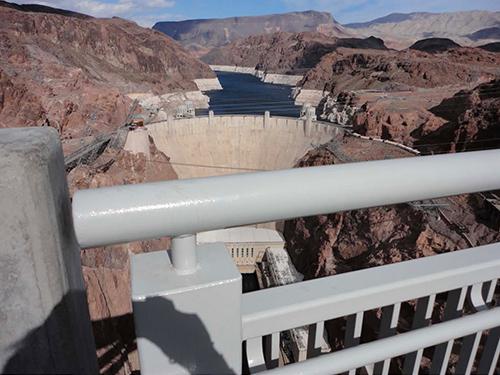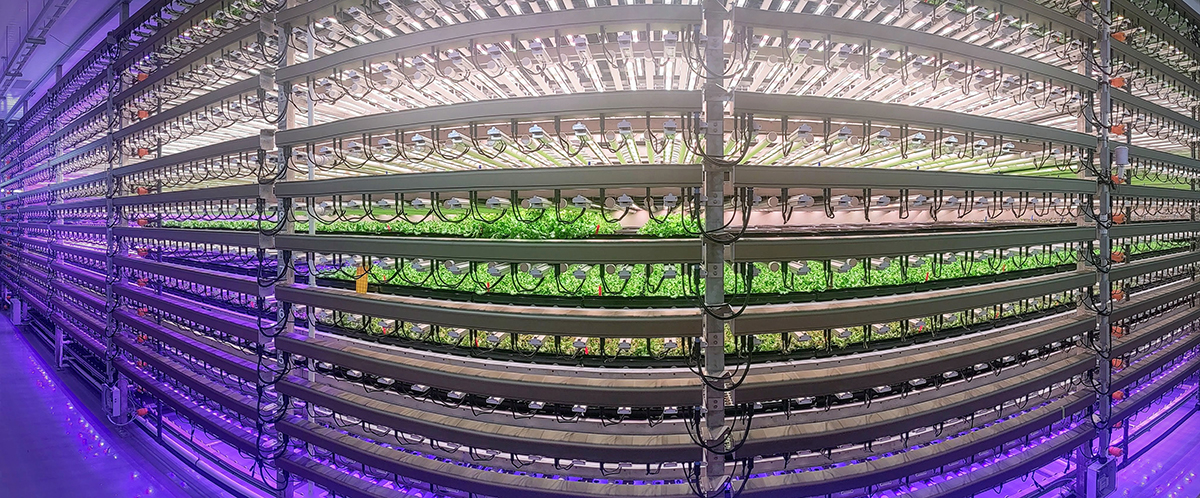
Next-Level Farming
Subheadline
NASA data and expertise helps controlled environment agriculture reach new heights
It’ll be years before astronauts living beyond the reach of regular resupply missions will have to grow some of their own food and medicine, but small-scale farming will be essential for extended lunar exploration and long missions to Mars. NASA has been preparing for that day for decades. Now, using expertise the space agency has developed in closed-environment plant growth, private companies are making indoor farming a major food source on Earth.
Among the largest of these indoor farming operations is the IntraVision Group’s GravityFlow closed-environment growth system, which has the potential to produce over a million pounds of produce annually at a single facility.
Beginning in the space program’s early days, NASA worked on growing plants without sunlight, open air, or abundant water. Research into bioregenerative life-support systems included growing crops to produce oxygen and food while recycling waste and carbon dioxide. Decades of effort yielded hundreds of research papers and other resources sharing successful vertical farming conditions, ranging from lighting and oxygen flow to nutrients and “recipes” for producing specific plant varieties, or cultivars (Spinoff 2021).
The task is so complex it required more expertise than the agency had. Describing it as “well beyond the means of NASA programs,” Gioia Massa, life sciences project scientist at NASA’s Kennedy Space Center in Florida, said the list of challenges is long.
“NASA’s role is in breaking new ground for some of these technologies or approaches, funding the very early-stage development,” she said. “For those things that have terrestrial applications or commercialization potential, industry picks up those.”
Space Crop Production
Starting in 2003, IntraVision’s technology development was informed by NASA data and staff expertise as the two organizations researched and tested plant growth technology at the University of Guelph’s Controlled Environment Systems Research Facility in Toronto, Canada. As a long-term sponsor of the program, IntraVision benefited from these projects, conducted in conjunction with NASA researchers.
As part of a 20-year informal partnership with the university, the agency supported the creation of the Guelph Blue Box chamber.The collaboration included a NASA research fellowship during which Tom Graham, now a faculty member at the university, conducted red-light plant-growth experiments.
In addition to informal information exchanges, such as sharing results from a particular experiment, findings are also published or presented at conferences. Massa said her team relies heavily on other scientists for data related to space crop production.
“The University of Guelph is probably the primary group working on those types of challenges. The data they’re collecting and their publications are really helping meet NASA’s needs for understanding different biological or technological solutions,” she said. Businesses are filling other gaps.
Photobiology – controlling living organisms with light – is a primary focus for Oslo, Norway-based IntraVision. Since working with LEDs in 2004, the company expanded into creating complete controlled environment agriculture (CEA) systems. A customer can have an entire farm designed by the company or purchase individual components for a plant-growth system.
The 20- to 30-foot-tall vertical shelving system is called GravityFlow. It includes the Raptor sensor kits, Maestro light controllers, and a facility management software called Luminous. The company’s LED lighting systems emit wavelengths selected through plant experiments.
“We say plants have light sensors, so they’re able to detect UV rays, and blue, green, and red light in the visual spectrum, as well as infrared light,” said Per Aage Lysaa, CEO of the company. “The spectrum a plant detects will then kick off a chemical process, which directly controls morphology and primary and secondary metabolite processes.” This changes the flavor, nutrient content, color, and even size of the plant. To optimize all this, IntraVision developed multispectral LED lighting that can be automatically preprogrammed for different growth chamber needs.
Safer Lettuce
The company incorporates various lighting options and other technologies into its CEA platform for scalable vertical farms. The computer-controlled GravityFlow system generates any light spectrum and regulates the hydroponic nutrient flow, temperature, air-speed, carbon dioxide levels, and relative humidity.
A variety of sensors collect data while custom software uses that information to control growth. A library of data is automatically generated and added to a larger plant database, which uses machine learning to continually improve the systems.
Following a small pilot farm in Toronto, Canada, in 2017, the first full-scale growth system was built by Vision Greens in Canada in 2020. A new highly automated farm, the first planned for the United States, started production in New Jersey and will produce between 300 and 450 tons of produce annually while requiring only a handful of staff.
In addition to optimizing growing conditions, the automation allows growers to trace a crop from seed to plant to produce, and to the grocery store or restaurant, improving food safety, according to Lysaa. The system provides life cycle documentation that demonstrates that the produce is uncontaminated.
“The system will always know which plant is where, so you can check for the optimum conditions,” he said. “We have planning tools and alarms to prevent problems. And we eliminate the sources of bacteria, such as the E. coli found in romaine lettuce in the United States that killed several people.”
Approximately 55% of all lettuce consumed in this country comes from California. Once harvested, it’s shipped over 2,000 miles to processing plants in the Midwest or on the East Coast. Bacteria can be transferred to the plants at any time – from a bird overhead or the surface of a shipping container. CEA eliminates those sources of possible contamination.
High-quality, high-volume production makes it possible to transition from selling the small quantities of produce most commercial vertical farms produce to a commodity-level volume that competes in price with traditional, subsidized agriculture. And CEA uses up to 95% less water, requires no pesticides, and grows more food on a fraction of the land, making it a sustainable alternative.
Medicine and More
Thanks in part to NASA-funded research, IntraVision has built on LED research to produce light fixtures that generate 75% light and only 25% heat. The company also expanded into LEDs with specific ultraviolet wavelengths. These control the morphology in flowering plants, including many used for medicinal purposes.
“We picked roughly 10 of the important Chinese, Middle Eastern, and other traditional medicinal plants to cultivate,” said Lysaa. The company’s effort to develop new CEA cultivars builds on research performed for customers on the indoor cultivation of cannabis. This involves using different light spectrums to optimize the plants, growth and production of bioactive molecules.
One customer, Plant Form, uses the IntraVision growth system to grow a biosimilar form of Herceptin, a drug that breast cancer patients take following an operation. The company uses genetically modified tobacco plants to generate a biological form of the drug. Herceptin costs approximately $35,000 annually per patient. A plant-based version will cost considerably less.
Other successful biotech cultivars are food extracts such as mint oil. The mint in toothpaste and chewing gum is from plants that used to grow in the United States until it became too expensive. The mint is now produced in Sri Lanka, Vietnam, and China, whose populations are forcing more land into food-crop production. Recognizing that mint could easily become a CEA crop, IntraVision has the technology to make that transition.
Feeding Astronauts and Other Humans
As human populations grow, the resources needed to provide food are diminishing. Hotter and more extensive wildfires scorching arable land, increased costal and river flooding, and groundwater contamination by chemical fertilizers and pesticides all limit what traditional farms can produce. CEA technology offers a different kind of farming for future generations, just as it will feed astronauts.
“As we grow in space, we have similar challenges that indoor agriculture has on Earth,” said Massa. NASA’s efforts to support improvements in commercial products for plant growth provide off-the-shelf technologies that save time and money.
“NASA does the things that are hard, the things that don’t have a quick return on investment, and industry is going to do the things that will have a much faster return on investment,” said Massa. “Some of the things we’ve worked on are things that now have terrestrial uses, like the use of LEDs to grow plants. Now, that’s really something.”
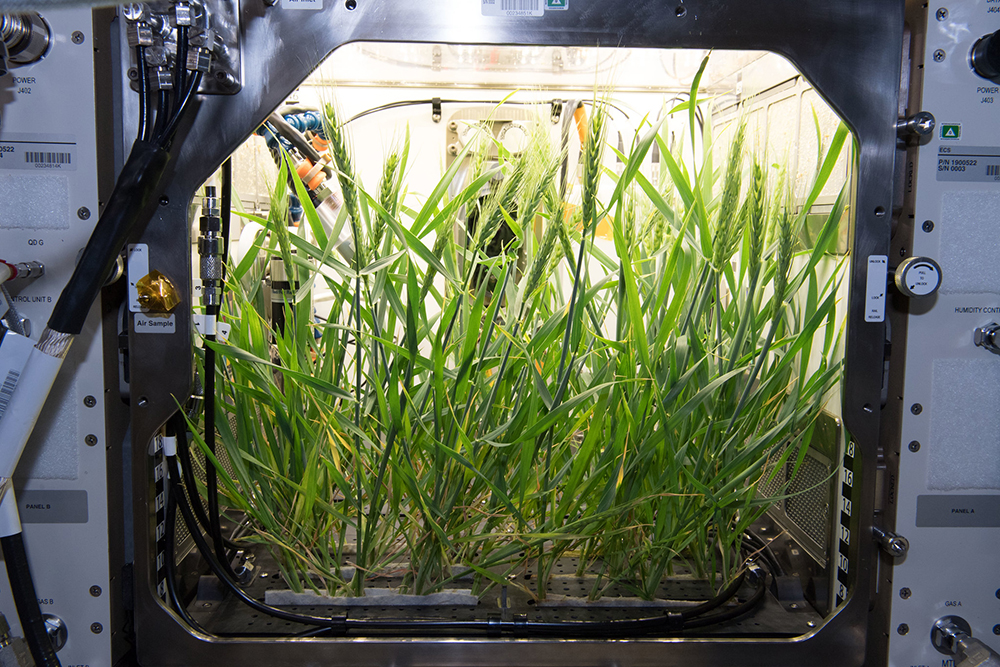
The first growth test of crops in the Advanced Plant Habitat aboard the International Space Station yielded great results. Arabidopsis seeds – small flowering plants related to cabbage and mustard – grew well, building on more than 40 years of plant-growth research. Credit: NASA
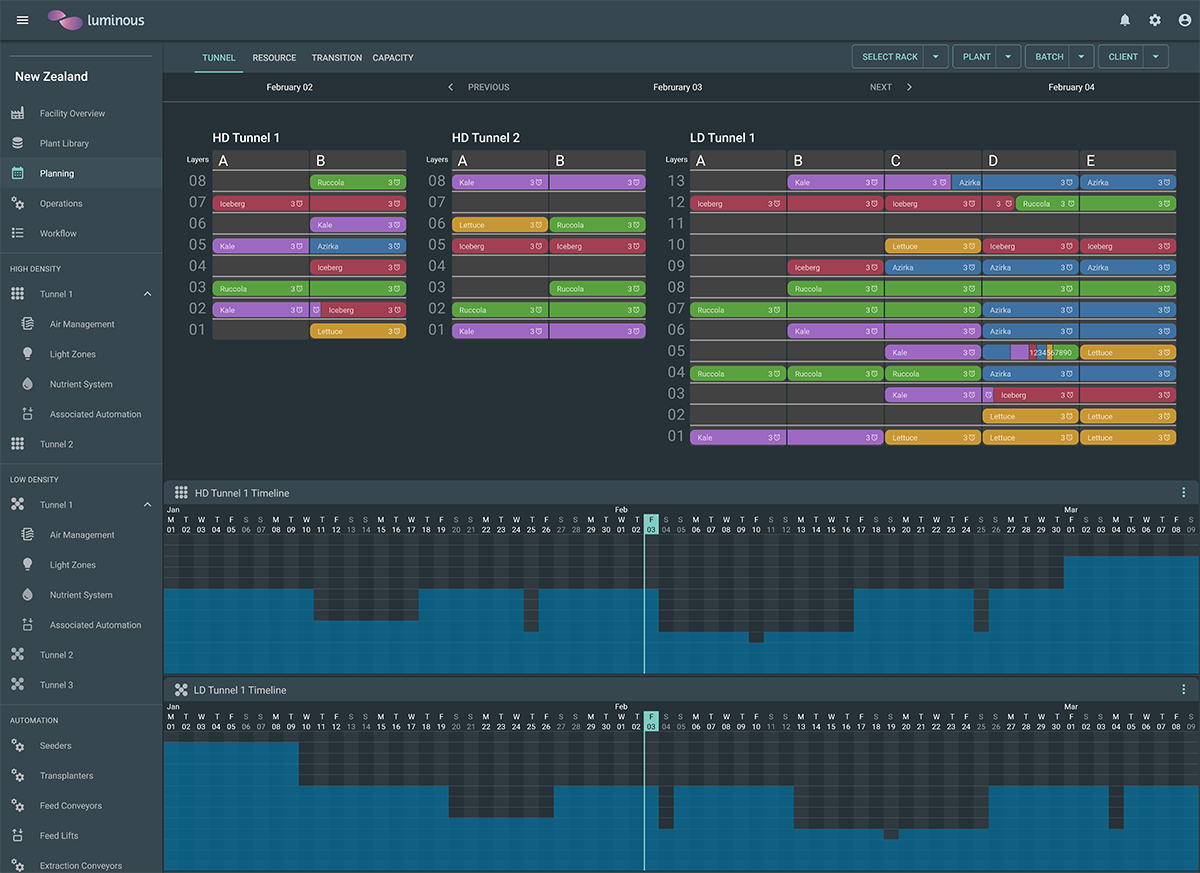
The highly automated controlled environment agriculture (CEA) GravityFlow system developed by IntraVision Group only requires a few people to operate a facility that can grow over 300 tons of food annually. Credit: IntraVision Group
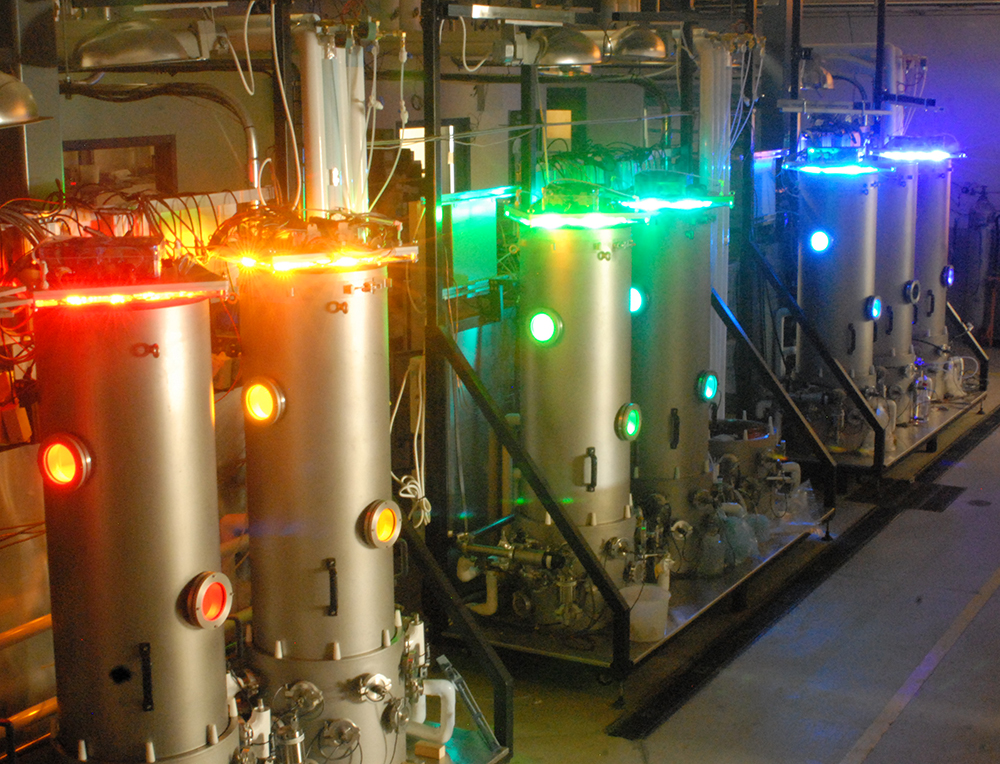
Light emitting diode (LED) experiments conducted by the University of Guelph benefited from NASA research exploring how different colors of light affected the nutrients, taste, and color of numerous plants. That data informed IntraVision Group lighting options for CEA. Credit: University of Guelph
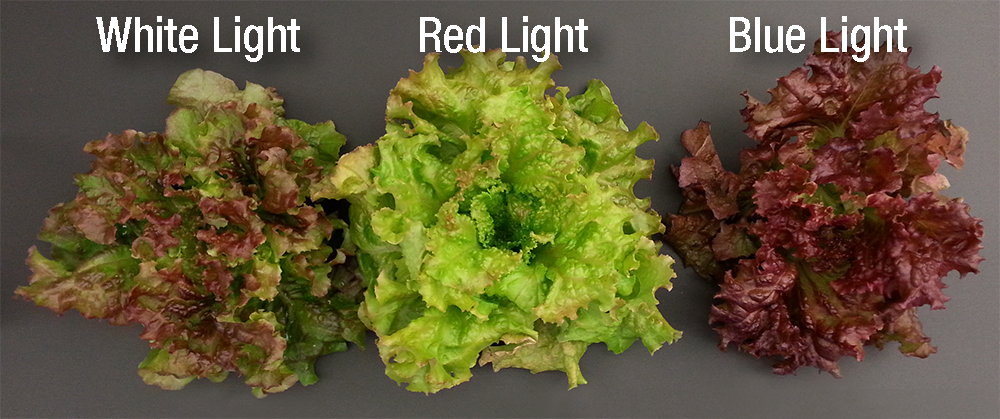
A variety of romaine lettuce shows how the plant responds to white, red, and blue light. Each had a different nutrient content and flavor showing that the quality and kind of light matters. Credit: University of Guelph

IntraVision Group is using NASA plant-growth research to take vertical farming to new heights. Twenty- and 30-foot towers of hydroponic trays include customized LED lighting, nutrients, water filtration, air flow, and C02 levels to meet crop needs. Credit: IntraVision Group













